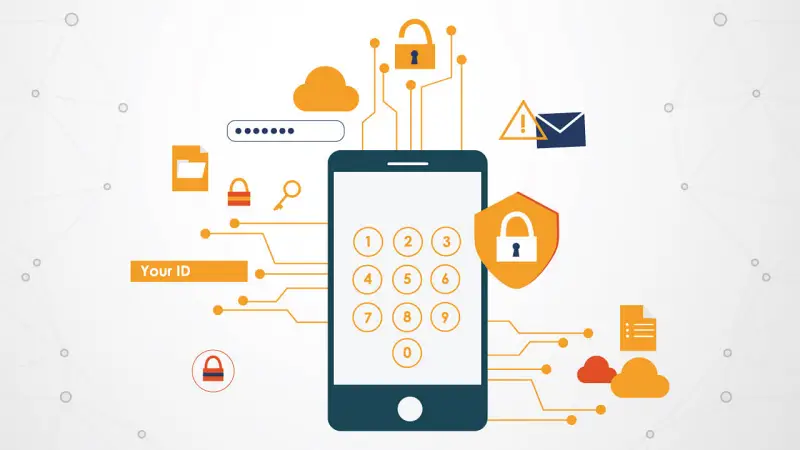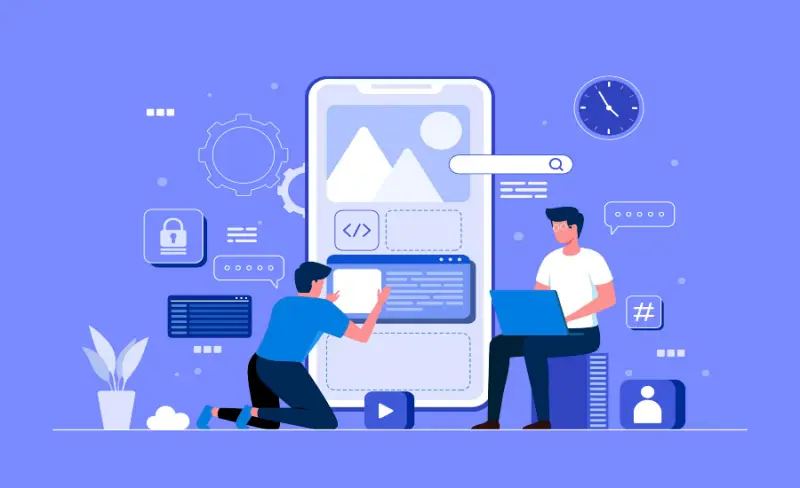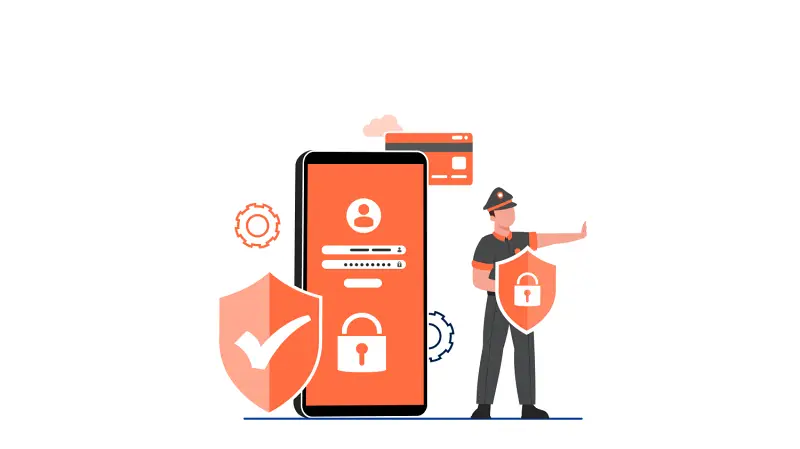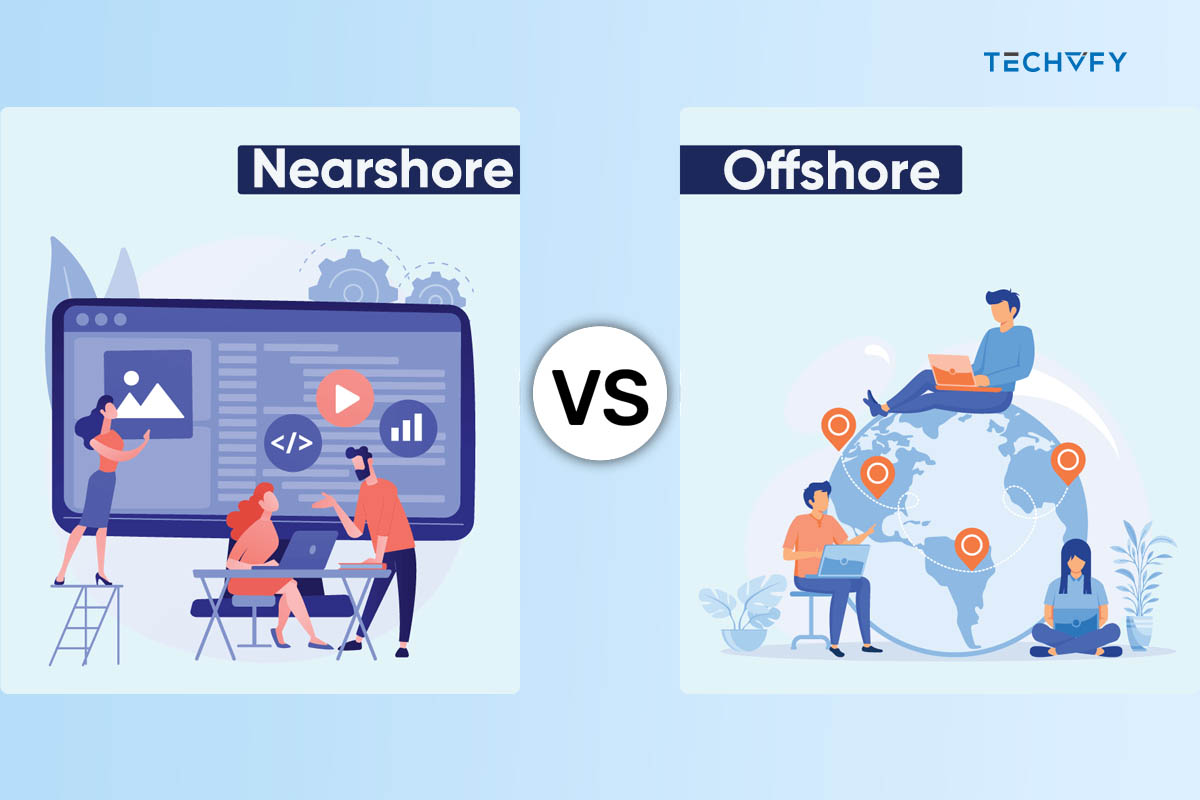Mobile App Security – It’s Time to Protect Your Application
- TECHVIFY Team
- 0 Comments
More people now use mobile applications rather than traditional desktop applications for most digital activities. In 2015, in the U.S., users dedicated 54% of their time spent on digital media to mobile devices. These apps access many user data, including confidential data, which needs to be safeguarded against unauthorized access. In this article, you will have a better understanding of mobile app security and know how to do security for apps.
I. Things to know about Enterprise Mobile Application Security
Mobile App Security: Definition
Mobile application security is the discipline focused on securing mobile applications from unauthorized access, use, disclosure, disruption, modification, or destruction, which is critical in managing enterprise mobile application security. This security practice encompasses various methods and technologies to protect the applications and the data they process from cyber threats such as malware, phishing attacks, and other forms of exploitation. It involves implementing secure development practices, conducting regular security assessments, enforcing data encryption, and utilizing runtime protection measures to safeguard applications across different mobile operating systems like iOS, Android, and Windows.

Benefits of Mobile App Security
Mobile apps collect extensive user data, making it crucial to handle this information securely. Insecure apps provide an easy path for malicious entities to access and sell personal information.
- Defend Against Cyber Threats: Mobile app security acts as a strong shield against the latest cyber threats, keeping sensitive user information safe from hackers and harmful software.
- Increase Consumer Trust: When app developers use strict security measures, they build trust with their users. People are more likely to use and recommend apps that they trust to protect their data.
- Meet International Standards: Using top-level security practices helps ensure that mobile apps comply with worldwide security standards and regulations, essential for operating in global markets without compliance issues.
- Reduce Financial Risks: Strong security measures lower the risk of financial fraud and data breaches, reducing potential financial losses from lawsuits or regulatory fines.
- Protect Intellectual Property: Mobile app security is key to safeguarding the unique elements of the app, like proprietary algorithms, user interface designs, and special features, from being copied or altered.
- Streamline User Authentication: Modern security methods like biometric authentication offer a smooth and quick user experience, removing the hassle of passwords while ensuring secure access.
- Create a Safe E-commerce Environment: Solid security is crucial for apps that handle purchases and sales. This ensures a safe environment where users can conduct transactions confidently, knowing their financial data is shielded from fraud.
Learn more about mobile app development with TECHVIFY:
Unveiling Mobile App Development Costs: Strategies for Savings
II. How can you Implement Security for Apps
1. Scanning
The initial step in protecting an organization’s mobile applications is to shrink the mobile attack surface. Organizations achieve this by finding and fixing app vulnerabilities before attackers can exploit them.
A key tool in this process is a Mobile Application Reputation Service (MARS). This service checks mobile apps for vulnerabilities and monitors for unusual activities that might indicate hidden backdoors or external compromises. Using the insights from a MARS report, an organization can assess the risks associated with a mobile application and take action to reduce these risks.
Using MARS for mobile application security testing (MAST) is vital for preventing major security breaches. For instance, Check Point Research found security configuration errors in mobile apps that put the personal data of over 100 million users at risk. The MARS report identified many of these problems.
2. Hardening
Once an organization has fixed known vulnerabilities in its mobile applications, it should also prepare for possible unknown vulnerabilities. Increasing security is crucial as cybercriminals often target mobile applications to steal sensitive data or insert harmful features.

Mobile application security solutions should include hardening measures to make these attacks harder. These measures, like code obfuscation, anti-tampering, and app integrity checks, make it harder for cybercriminals to break down or change the application. By taking these steps, an organization greatly lowers the chance of a successful attack.
3. App Protection
To handle the risks of known vulnerabilities, it’s important to strengthen mobile apps to avoid exploitation. However, there’s always a chance that attackers might exploit gaps in a mobile application.
For this reason, it is essential to include active protection for mobile apps on employee devices. A mobile runtime application self-protection (RASP) solution effectively guards mobile applications from new and zero-day attacks.
RASP defends against zero-day threats by closely observing a mobile application’s internal processes and runtime state. It checks the app’s inputs, outputs, and behavior to see how certain inputs influence its behavior.
If an attack occurs, the mobile application will behave unusually. RASP solutions look for these unusual behaviors to spot attacks. By noticing and reacting to these unusual behaviors, RASP can identify and stop new attacks that disrupt the application’s normal operation.
Secure your Mobile Applications with TECHVIFY today!
Contact our experts for a free consultation. We’ll help you decide on the next steps, explain how our process is organized, and provide you with a free estimation.
III. Mobile App Security Threats
Mobile applications associated with business brands are frequent targets for fraudsters. These attackers aim to exploit customers, their children, or businesses directly. Here are the potential impacts of a mobile malware attack on a user’s device:
1. Account Takeover
Malware can enable attackers to seize control of a user’s app account. This can lead to unauthorized transactions, data alteration, or account misuse, affecting both the user and the business’s reputation.
2. Stolen Login Credentials
Malware often seeks to capture usernames and passwords. Once obtained, these credentials can access sensitive personal and business accounts, leading to further breaches.
3. Stolen and Resold Credit Card Details
If malware captures credit card information, this data can be sold on dark web markets, leading to financial fraud against the affected individuals.
4. Unauthorized Access to Business Networks
Compromised mobile devices can be entry points to broader business networks. An attacker might use a breached mobile device to infiltrate business systems, potentially accessing confidential information or disrupting business operations.
5. Identity Theft
With access to personal data collected from mobile applications, attackers can impersonate victims. This can lead to unauthorized opening of accounts, credit applications, and other fraudulent activities under the victim’s name.
6. Malware Spread to Other Devices
Infected iOS or Android devices can act as conduits, spreading malware to connected devices. This can extend the impact of an attack from a single device to an entire network, compounding the potential damage.
7. SMS Message Spying
Malware can intercept SMS messages, scanning them for sensitive information such as One-Time Passwords (OTPs), banking details, or private communications. This interception compromises personal security and can facilitate further attacks or fraud.
IV. Mobile App Security Best Practices

Digital Security Training: Teach your team to spot and avoid security risks, recognize phishing, and apply cybersecurity methods. Regularly test their knowledge with unexpected phishing simulations through emails, texts, and other forms of communication. These should closely resemble real phishing attempts. Employees who click on a simulated threat should be automatically signed up for a data security training module. It’s important to remember that most mobile phishing attacks happen via SMS or social messaging rather than email.
Acceptable Use Policy: Write a clear acceptable use policy for mobile devices that access business data. This policy should forbid downloading apps from third-party stores and detail other security measures. Set up a process to evaluate and approve secure apps for company use.
Monitoring for Rogue Apps: Regularly check both official and unofficial app platforms for any unauthorized apps that use your organization’s name, logo, or messages. Quickly get in touch with the platform to have these rogue apps removed.
Conclusion
Effective mobile application security is vital for protecting personal data and corporate assets. Employing robust security protocols, rigorous testing, and advanced solutions like RASP and MARS is essential. For the ultimate in mobile app security, turn to TECHVIFY. Our expert services ensure your applications are secure and resilient against threats. Don’t wait—secure your mobile applications with TECHVIFY today and safeguard your digital assets. Contact us now!
TECHVIFY – Global AI & Software Solutions Company
For MVPs and Market Leaders: TECHVIFY prioritizes results, not just deliverables. Reduce time to market & see ROI early with high-performing Teams & Software Solutions.
- Email: [email protected]
- Phone: (+84)24.77762.666





